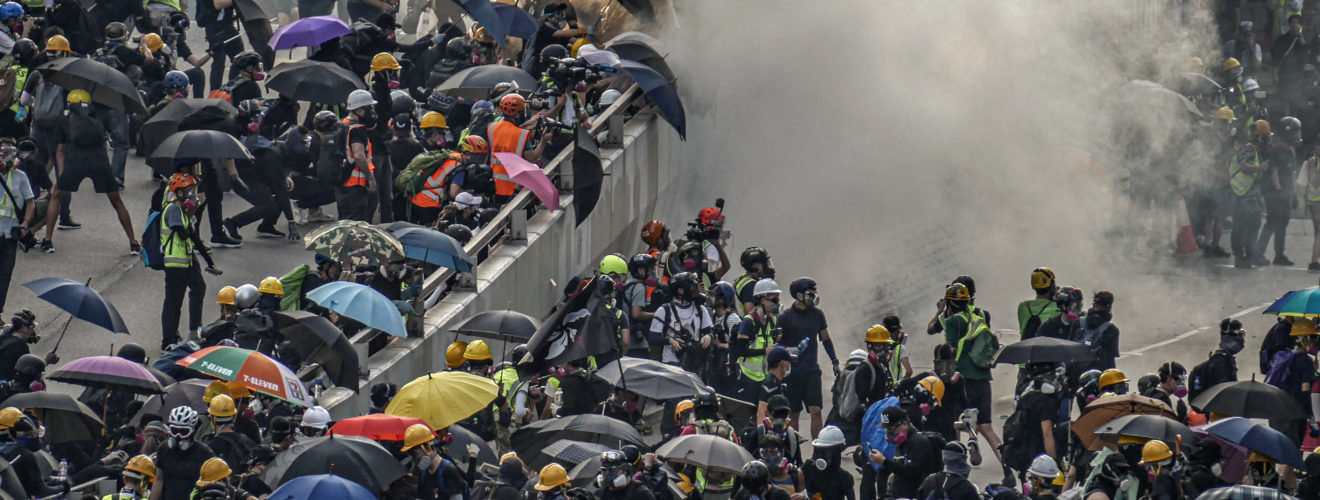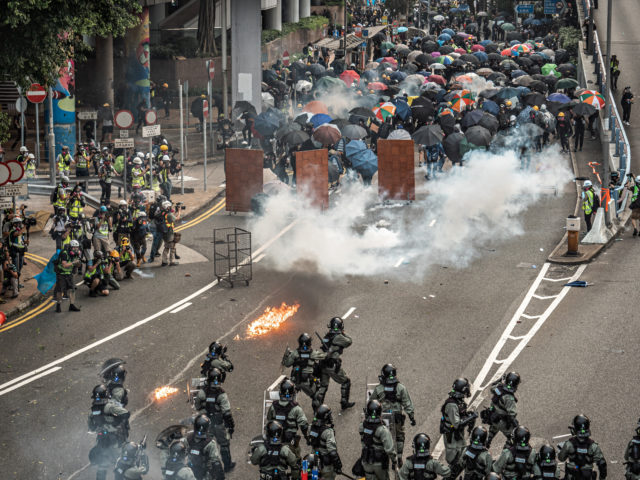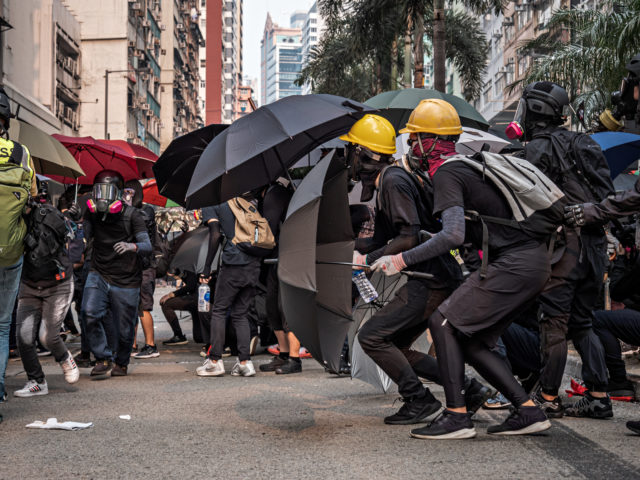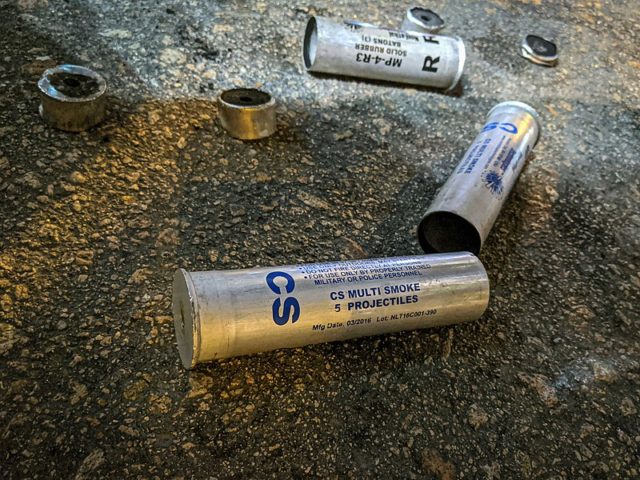HKPF, you’ve got some nerve: Exploring the long-term effects of tear gas exposure

The Hong Kong Police Force have bombarded citizens with cheaply-made Chinese tear gas for the last year, what physical effects will this have on its citizens? Meg investigates the ingenious ways protesters can protect themselves from tear gas exposure.
The 2019 Hong Kong protests were sparked by the attempted introduction of the extradition law: a bill which would allow extradition of accused criminals to places where Hong Kong currently doesn’t have extradition agreements. This meant that people accused of crimes could have been sent to mainland China, a place that is known for its lack of human rights. On June 9th 2019, more than one million people marched against this bill, but to no avail. The government paid no notice to the will of the people and proceeded to pass the bill.
So, on June 12th following the second reading of the amendment, protesters gathered outside the Legislative Counsel (LegCo) which led to unrest between them and police. This was the first incident where the police fired rubber bullets and tear gas. Protests were held every Sunday and occurred with increasing frequency until they were halted by the coronavirus pandemic, and are resuming as the country returns to normal. The protests caught worldwide news headlines when there was a standoff between protesters and riot police in the Chinese University of Hong Kong1.
When used within the recommended guidelines, tear gas is a tool for dispersing crowds and has minor and short-lived side effects. It is a nerve agent known for making its victims experience tears, skin irritation, rashes, coughing and wheezing. The Geneva Protocol allows for the use of tear gas to disperse crowds in riots. However, since the protestors wore gas masks, they did not feel the immediate effects and it was rendered useless. The excessive use of tear gas by the Hong Kong Police Force (HKPF) in retaliation to the wearing of gas masks is extremely dangerous.

Hong Kong is very closely packed together with high skyscrapers and narrow roads, meaning that when tear gas is fired, it has no place to go. Tear gas just sits stagnant on the streets with little air stream to move it. One of the only directions to go is up and into air conditioning units or through poorly sealed windows, affecting those not taking part in the protests. The HKPF have also been known to fire tear gas into MTR stations (Hong Kong’s railway system) where tear gas cannot escape.
Protesters were praised for their organisation, everyone worked cooperatively in order to neutralise tear gas canisters. It is possible to prevent them from activating, or to prevent the spread of the gas if they were too late. Methods to neutralise canisters involve starving it of oxygen, preventing the smouldering reaction which releases its contents. Tactics such as putting traffic cones over canisters and blocking air flow were used as well as placing it in a Thermos filled with a dense liquid such as mud, sealing it off and shaking it to fully coat the canister.
Hong Kong protesters realised it is important to be covered in appropriate protective equipment (some of which is also useful for preventing COVID-19 transmission) such as gas masks, goggles and heat resistant gloves for handling hot tear gas canisters, as well as umbrellas to shield from incoming rounds or to protect from pepper spray2.

As a last resort, water can also be used to neutralise the canisters. Cooling down the canisters can help prevent the reaction and for those who are exposed to the gas, water can wash the CS gas (2-chlorobenzalmalononitrile, the main component of tear gas) out of eyes and off of skin. Hong Kong protesters were also given advice to watch out for undercover police officers posing as protesters, saying to look out for “equipment such as earphones/earbuds… to receive orders from their commander”3. During the protests, some began to carry notes stating their name and that they would not commit suicide (after deaths of protesters were viewed with suspicion after the police claimed they committed suicide). If they were being arrested, protesters would shout their name and try to ensure someone was filming the arrest.
HKPF were also accused of firing expired tear gas canisters. Tear gas becomes very dangerous when expired as it can be chemically unstable. Using expired tear gas greatly increases the risk of producing dangerous levels of cyanide, which is normally produced in small and not dangerous amounts. A Reddit user claiming to be a protester posted a photo of an expired tear gas canister, allegedly fired by police. While this is difficult to verify, the post was widely circulated online4. The Hong Kong Free Press reported that the police have admitted to using expired canisters in the past, however the police failed to respond to this latest incident.

As Hong Kong returns to normal after the pandemic, weekly protests have resumed and the police continue to use excessive volumes of tear gas. Upwards of 85% of Hong Kong’s citizens were exposed. Since protests began, doctors in Hong Kong have seen a rise in respiratory infections (bronchitis), lung inflammation (pneumonitis) and coughing up blood (haemoptysis). However, there is currently no citywide registry for such cases to be recorded. There is a demand for one to be created by healthcare professionals to log hard evidence on the effects of tear gas and protect the citizens of Hong Kong, many of whom were not partaking in the protests yet were still being affected. This includes the very young and the very old, both of whom have increased sensitivity to tear gas. Babies have small lungs; exposure to a given amount of tear gas can produce more damage than in an adult. Similarly, the eyes and skin of a baby have thinner layers of protection.
Most countries who use tear gas as a riot control tool thoroughly decontaminate areas in which it has been fired to prevent long term damage to its citizens. Hong Kong does not. The blatant lack of care for their own citizens is concerning and the excessive use of tear gas will continue to have long term health effects on both protestors and bystanders. It is time that governments worldwide stand up against police brutality, lest we end up responsible for a generation with serious health conditions and the eventual loss of a great nation to a tyrannical dictator.
This article was written by Meg. It was specialist edited by Perrine Lasserre and copy-edited by Vaiva Gikaite.
References
- Have a look at the events that unfolded here
- www.reddit.com/r/coolguides/comments/gs0k6v/protest_gear_tips_from_hong_kong_protesters/
- www.globaltimes.cn/content/1190144.shtml
- The expired tear gas canister photo can be seen here










